Get to know us: Associate Professor Maria Sammalkorpi
Sammalkorpi received her doctorate from Helsinki University of Technology 2004. After her defence, she has worked as a researcher at the Universities of Princeton, Yale and Aalto.
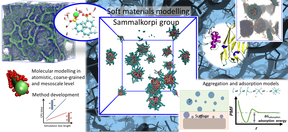
Research projects in Soft Materials Modelling group
We work mainly on biotechnology, polymer materials, and adaptive soft matter systems. Our research focuses on macromolecular and colloidal assemblies but also complex externally driven assembly in soft matter. We strive for fundamental understanding, yet work on practical materials and research questions, typically in tight collaboration with experimental groups. We are the modelling group the Academy of Finland Center of Excellence in Life-Inspired Hybrid Materials (LIBER): we tend to get especially excited about assembly phenomena, the influence of interfaces (surfaces), and external driving of the material self-organization via molecular and energy flows. Soft matter in electric and magnetic fields also gets our attention, as do the effects of ion pairing (charge correlations) and ion gradients in solutions in controlling assembly and structure formation.
Some topic areas that we work on are listed below.
Coacervate / condensate phase of polyelectrolytes and proteins. For polyelectrolyte materials, we have worked on the role of water and ions on the thermal response of materials rising from complex coacervation (polyelectrolyte complexes and multilayers). For protein systems, we focus on block proteins that undergo liquid-liquid phase separation (LLPS) as a preassembly step for structural protein materials. Most of our protein materials work is on synthetic silk-like proteins.
Colloids in apolar environments (oil-water-oil interfaces and reverse micellar systems). An apolar solvent, opposed to water as the solvent, results in surfactant and colloidal assembly systems to a variety of both fundamentally and technologically relevant, yet poorly understood phenomena. We examine assembly and adsorption in reverse micellar systems but also driven self-organization of colloidal assemblies in apolar media. We work on both biobased and synthetic surfactant systems.
Cellulose materials and other carbohydrates. In cellulose materials, we focus on understanding water interactions and co-solute effects at cellulose crystal interfaces to understand transitions in cellulose crystal aqueous suspensions, more precisely sol to gel and gel to stiff gel transitions. We have also ongoing research efforts on solvent effects in colloidal lignin assembly and starch as assembly additive in systems with colloidal particles. In these, our modelling targets biobased, responsive materials.

Maria is a scientist by training, a researcher by disposition, and tends to care. Her researcher profile including an incomplete list of publications and pdfs can be found here (research.aalto.fi). Maria is a principal investigator in the Academy of Finland Center of Excellence (CoE) in Life Inspired Hybrid Materials (LIBER) and the group is the modelling group of the CoE. Maria also sends special funding love notes to Novo Nordisk Fonden for Ascending Investigator 2022 award.
Maria teaches Molecular Thermodynamics (CHEM-E4210) , Soft Materials Modelling (CHEM-E5155), and Computational Chemistry I (CHEM-E4115). She also instructs a number of student projects and B.Sc. / M.Sc. theses for the Aalto degree programs. She is involved in a few other things as well. Anyway, what ever is your reason to seek her out, her work contact information is:
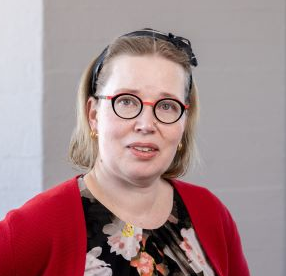
Maria Sammalkorpi, D.Sc. (Tech.)
Maria claims to be nice, and occasionally is. She used to be quite shy about her geeky books and computers. Then, she went to get a degree in physics and grew up a little. The amount she grew is rather disputable as she still measures only 153cm (~5ft). Sometime later she acknowledged also chemistry, got a doctoral degree, and fell in love, definitely not in that order.
Dmitry Tolmachev, Ph.D.
Dmitry models biosynthetic protein materials, but is also involved with the cellulose modelling directions of the group. Dmitry has a broad molecular modelling background of chemically specific molecular systems.
Max Philipp Holl, Ph.D.
Max focuses in the group on theory and modelling approaches to magnetic field driven pattern formation in systems with diffuse interfaces. His methodological expertise is in field-theoretic models and statistical mechanics, and he comes to the group with soft matter physics background.
Tuuva Kastinen, Ph.D.
Tuuva works on polypeptide and other polyelectrolyte interactions in aqueous solutions. She uses atomistic detail molecular dynamics (MD) and ab initio molecular dynamics (AIMD) approaches in her work. Tuuva's background is in chemistry and she has a quantum chemistry modelling background.
Gabriel Debais, Ph.D.
Gabriel is very familiar with mean field and statistical mechanics approaches to soft matter systems. His main work in the group is polyelectrolyte assemblies but he also studies assembly transitions in colloidal matter.
Fabio Priante, D.Sc (Tech.)
Fabio comes to the group with computational physics background, with expertise in molecular level simulations, machine learning, and modelling of chemically specific molecular systems. His main work in the group focuses on emulsion and reverse micellar systems, as well as controlling their dynamics.
Zhennan Kou, M.Sc.
Zhennan models the interactions of cellulose crystals in water solutions focusing especially on the effects of cosolutes. Before joining the group, Zhennan did his M.Sc. thesis in the Applied Physics Department of Aalto University focusing on modelling phonons in MoS2 lattices.
Kourosh Hasheminejad, M.Sc.
Kourosh works on modelling polymer film coatings on biobased substrates. He uses mesoscale dissipative particle dynamics and atomistic detail molecular dynamics methodology to examine block-copolymer assembly in bulk and the film formation and structure at the substrate. Kourosh' comes to the group with a materials science background.
Hossein Vahid Dastjerdi, M. Sc.
Hossein works on interactions of charged polymers and salt ions. He uses atomistic, coarse-grained and mean field theory based approaches to examine interactions rising in polyelectrolyte systems in the presence of excess salt. Hossein's background is physics.
Adam Harmat, M. Sc.
Adam works on multiscale modelling of biomolecular condensates, especially the effect of external fields on liquid-liquid phase separation in protein systems. Adam comes to the group with chemical engineering and physical chemistry study background.
Efstathia Mantzari, M.Ph.
Efstathia's doctoral research is on biomolecular interactions with lignocellulose substrates. She has biosciences background.
Emil Stråka
Emil's research in the group focuses on instabilities in ferrofluid systems and the interfacial responses of phase separating fluids. He likes analytical approaches, uses also numerical methods, and sometimes resorts to particle-based simulations. Previously, he has worked in the group on magnetically controlled assembly of nanoparticles via Brownian and Langevin dynamics simulations approaches. Emil is a physics student but he also has some background in chemistry.
Linnéa Hammarberg
Linnéa comes to the group with a background that combines studies in pharmaceutics and life science technologies. Her M.Sc. thesis work focuses on the use of AI techniques in biomolecules and their assembly.
Can Yücel
Can's background is in fiber and polymer technology and his M.Sc. thesis is about azobenzene based polymeric sensor materials.
Iida-Liisa Kuokka
Iida-Liisa's research is on surfactant assemblies in apolar solvents. She uses molecular modelling approaches to study the assembly response in bulk and at interfaces. She comes to the group with chemical sciences and environmental sciences study background.
Yan Zheng
Yan is a chemistry M.Sc. degree program student who works in the group on complex phase separation responses in colloidal mixtures. She uses mesoscale particle-based simulations approaches in her work.
Emma Rantala
Emma examines self-assembling monolayers and their effect on surface wetting. Her main methodological tools are atomistic detail molecular dynamics simulations.
Dr. Alberto Scacchi, Dr. Ygor Morais Jaques, Dr. Maisa Vuorte, Dr. Mohammad Khavani Sariani, Dr. Sousa Javan Nikkhah, Dr. Sathish Kumar Mudedla, Dr. Piotr Batys, Dr. Ran Zhang, Dr. Erol Yildirm, Dr. Hanne Antila, L.Sc. Dipti Potdar, M.Sc. Zahra Mohammadyarloo, M.Sc. Jukka Määttä, M.Sc. Miko Niemistö, M.Sc. Samu Kivistö, M.Sc. Anna Leino, M.Sc. Dominik Wowczyk, Aapo Lokka, Markus Kyllönen, Rosa Penttinen,Juliaana Juurakko, Iina Kivimäki, Laura Tiittanen, Marc Härkönen, Sami Kulju, Sohvi Luukkonen

Sammalkorpi received her doctorate from Helsinki University of Technology 2004. After her defence, she has worked as a researcher at the Universities of Princeton, Yale and Aalto.
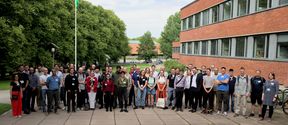
This three-day, international event included talks, poster presentations, and cross-disciplinary collaboration
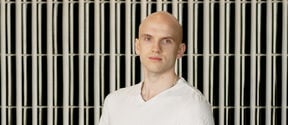
'It’s interesting to see how physicists and chemists can be looking at the same system, and yet arrive at very different conclusions, questions, and results. In LIBER Center of Excellence, you can see the expertise from different disciplines.'
Senior Scientist Maria Sammalkorpi has been awarded the highly competed Ascending Investigator 2022 Grant from Novo Nordisk Foundation for a total of ca 9 million DKK (1.2M€).
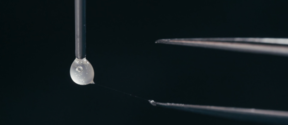
Electromechanical Energy Conversion and Transfer and Life-Inspired Hybrid Materials were chosen as Centres of Excellence led by Aalto University
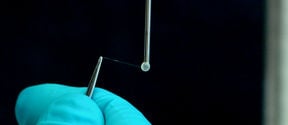
'Designing materials on molecular level – what does it mean for researchers, designers - and for the globe?’
Some years back, we also participated in the New Silk project, in which design and materials science met on bio-based synthetic protein materials (silk like materials). More info is available at https://www.aalto.fi/en/newsilk.